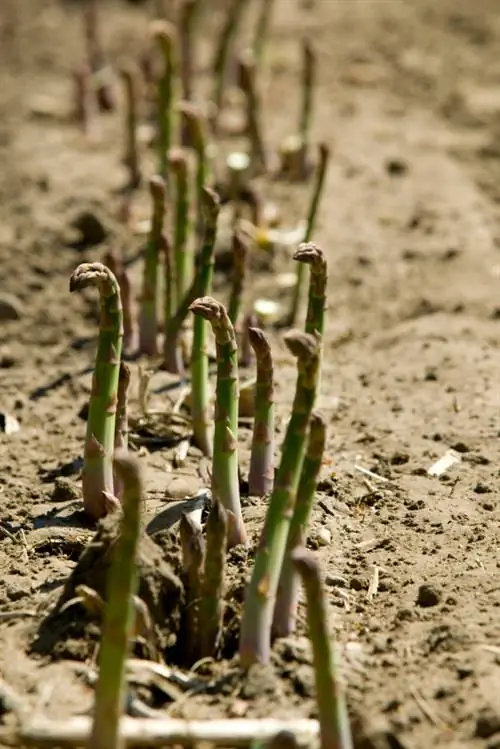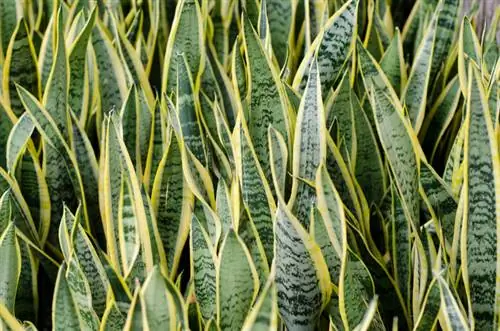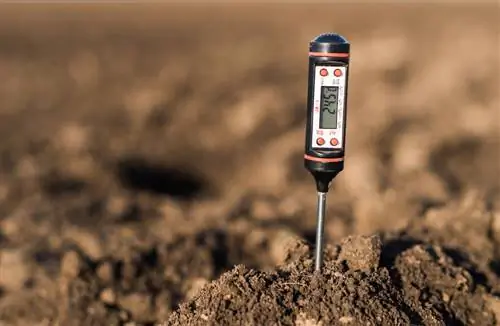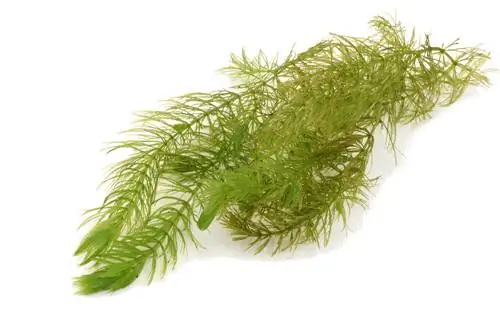- Author admin [email protected].
- Public 2023-12-25 17:45.
- Last modified 2025-01-23 11:22.
Palm catkins make their reproduction easy for us. All that is required is to wait patiently until a young plant grows into a stately tree. If you want to embark on this adventure, you can follow one of the paths described below.
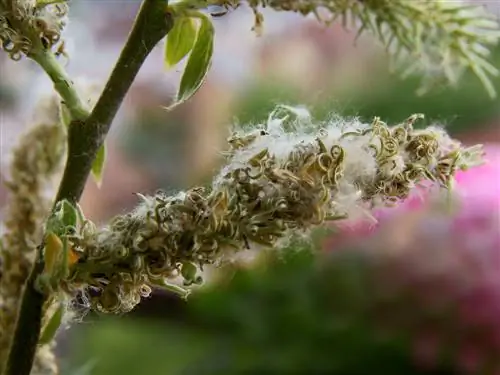
How to propagate catkins?
Palm catkins can be propagated by seeds or cuttings. Seeds can be found in nature and must be sown quickly. Cuttings are created when pruning after flowering and can be planted directly in the bed or grown in clay pots with potting soil and loam.
Reproduction methods at a glance
- Propagation from seeds
- Propagation by cuttings
Note:The crown shape of the hanging catkinseed willow is achieved through grafting. This variety cannot therefore be propagated by seeds or cuttings.
Find germinable seeds
You will search in vain for willow seeds in stores. Instead, head out into the great outdoors. Although the wild palm catkin is protected and its branches may not be cut from March 1st to April 30th, collecting seeds is permitted. Maybe you know someone who already has the kitten in their garden or even have one at home. But be careful: seeds are only formed for the first time after the fourth year of life.
Propagation from seeds
The germination capacity of the ripe seeds is extremely short at two weeks. So don't wait too long before sowing.
- Fill sowing pots with moist potting soil (€6.00 on Amazon)
- Sprinkle seeds on it
- do not cover with soil, instead just press lightly
- germination usually occurs within 24 hours
- Select and separate strong seedlings
- plant well-grown palm catkins after a few weeks
Propagation by cuttings
A simple propagation method that even a hobby gardener can use. Wait until cutting in the spring after flowering. Since catkins are pruned back vigorously, a lot of cuttings are produced. The direct route is to plant in the bed and delivers satisfactory results. If you want to make the effort, you can also prefer the cuttings according to these instructions:
- Provide small clay cultivation pots because this material can store water well. Each pot must have a large drainage hole.
- Lay a drainage layer at the bottom made of pottery shards or gravel.
- Fill the clay pots with a mixture of potting soil and clay.
- Select strong and straight branches from the cuttings.
- Remove all buds and smaller branches.
- Insert a cutting about 15 cm deep into each pot.
- Then press the soil and water the cuttings.
- Put the pots in a bright place.
- Keep the soil moderately moist at all times.
After about two weeks you will notice the first above-ground growth, provided the rooting has been successful. Allow the young plants to become stronger before planting out.


